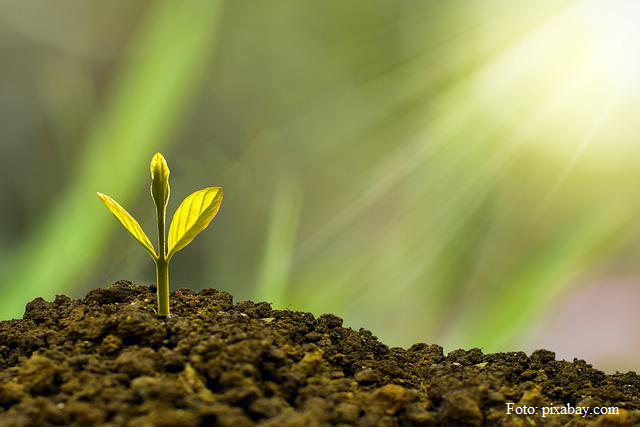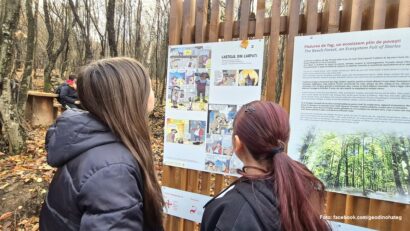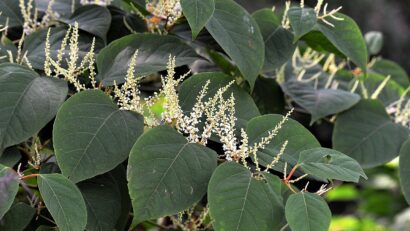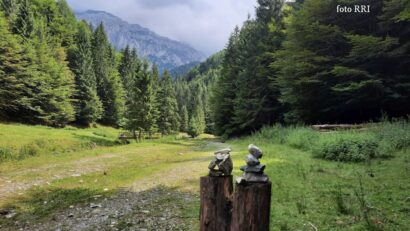Farming in Romania, past and present
Agroforestry and its role in Romania's farming system

Eugen Coroianu, 28.07.2023, 14:13
A
surface area of over a hundred thousand hectares of arid land stretches in
southern Romania, nearby Dabuleni, a locality known as the motherland of sugar
melons. The area is dubbed Romania’s Sahara. It already covers the greater part
of Dolj County’s eastern side, while silviculturists and NGOs have been trying
really hard to stop the advance of sands, mainly with the help of acacia plantations.
In the commune of Carcea, close by Craiova’s Internationals Airport, over the
summer, the farming cultivations are ailing. Not to mention the fact that summers
in Oltenia are long and hot.
However,
The Forest of Tomorrow Foundation has come up with a new idea and performs an
experiment. We have a brown-reddish soil, a semi-clayish structure Marian Mechenici
explains, who is employed by a company that contributes to the setting up of
that experimental plantation. It doesn’t have a satisfactory response in the
dry season. It cracks a lot. His teams
have already prepared 1.3 hectares of land that were sown with cereals and
vegetables, just like the surrounding fields. What makes this parcel different,
though, is the fact that it was simultaneously planted with fruit-bearing shrubs
and trees.
Always
in search of new solutions for climate fight, the Forest of Tomorrow Foundation
has purposefully financed a research study on the performance of agroforestry
systems.
We
want our fight to be as active as possible, against climate change and also in a
bid to enlarge Romania’s afforested surface areas, the director of the Forest
of Tomorrow Foundation, Mihai Caradaica, explains. Mostly for the plains region,
where we can find around 6% of Romania’s forests, the benefits of the agroforestry
systems are multiple: the reduction of the carbon dioxide in the atmosphere,
the increase of the farming cultivations’ economic potential through the humidity
provided by the trees and the fertilization of the soil, protection for the
livestock there where the agroforestry systems are implemented in farms, Mihai
Caradaica also said.
But
what is an agroforestry system? We’ve found that out visiting the site of the Forest
of Tomorrow Foundation. The definitions provided by literature are many, yet
all of them highlight
the integration of trees and other wood species (in various combinations) in
the farming cultivations, in pastures or in zootechnical activities, in a bid
to have extra benefits from the same surface area. The shelterbelts protecting
cereal cultivations, or the trees, be they isolated or in groves, that have
been preserved on livestock grazing land are the handiest examples for Romania,
yet the concept is a lot richer when it comes to the applied side. It is, perhaps,
the oldest model of long-lasting land management, dating from the Neolithic
period, when human being began to cultivate plants under the shelter provided
by forests. However, in the 20th century, the agroforestry systems were
almost completely replaced, in the West, by intensive farming: cultivations
planted on uninterrupted areas, using mechanized means and supported chemically
in order to cope with pests or to become more productive. Notwithstanding, in the
last forty years the perspective has begun to change. As for the role of the
forestry structures integrated in farming cultivations or in animal farming, it
has been better and better understood and implemented.
According
to the European Association for Agroforestry Systems, EURAF, in Europe there
are more than 8 million hectares cultivated according to that method. The trees
provide wood for constructions or energy, they also provide edible fruits,
shade and food for the livestock. Concurrently, trees stabilize the soil, also
balancing its chemical composition, they offer protection for cultivations
against the weather or pests, they purify the air and preserve the quality of
waters in a given surface area. Forests or shelterbelts support farming cultivations,
render them more productive and increase their resilience towards climate change.
Our research is, we hope, one first step we have taken towards a large-scale development
of Romanian agroforestry, according to the specialists working for the Forest
of Tomorrow Foundation. The project’s head researcher is Mihai Enescu, a senior
lecturer with Bucharest’s University of Agronomical Sciences and Veterinary
medicine:
Mihai Enescu:
We have a plot of land we have divided into 20 square-shaped farm
parcels with a 24-meter-long leg, where we will plant both common forestry species,
such as the oak-tree, the ash-tree, the Sycamore maple, the maple-tree, and many
others, but also some that are less used in Romania today. These are mainly xerophyte
species, resistant to the droughty conditions, indigenous species, such as the
downy oak, or allochthonous species, with origins in other countries, such as
the honey locust or the Siberian elm. We will also plant fruit-bearing shrubs.
Here, behind me, we can already see the European red raspberry, densely cultivated.
We will also plant blackberry trees, but also agricultural species, on our farm
parcels. There will be parcels with corn and sunflower, with various densities
and modern technologies. We will also test other suggestions that have already
had good results in countries located mainly in central and western Europe,
that is farther afield. We shall also come up with irrigated rows, unirrigated
rows, fertilized rows, unfertilized rows, so they can respond to more than twenty
research questions. I place my stakes on fast results, well, not for the very
first year, but for years two, three and four, as it is a project with a
four-year duration. I’m counting on results that are at least interesting, results
we can’t wait to promote.
The
eventual aim of the project is the compilation of a good practice guide, or the
use of Romanian farmers and forest workers. A handbook teaching people working
in the field how to use agroforestry systems in our country, at once taking the
local specificity into account, explaining what species goes with what species,
where, when and how, and what the effects of that are.






























